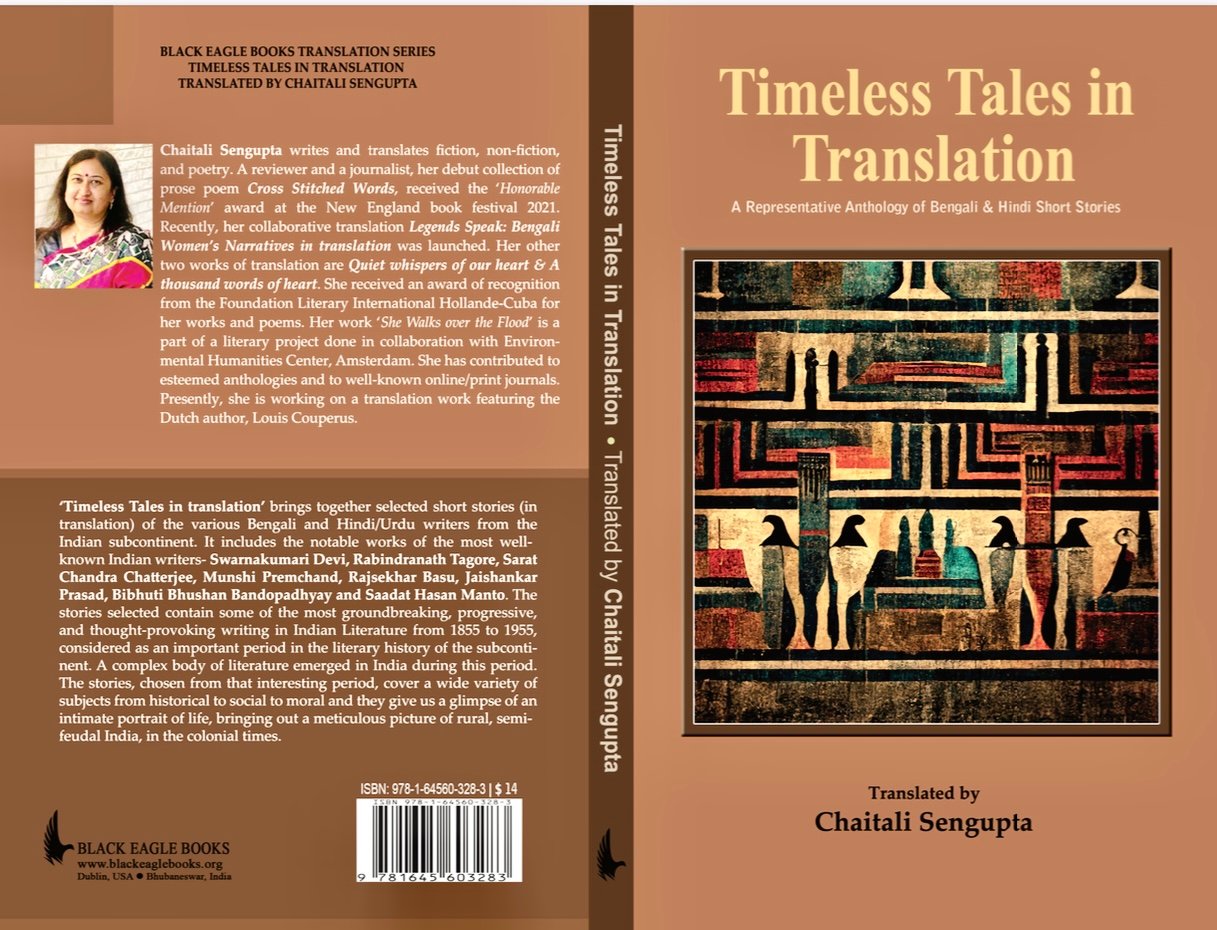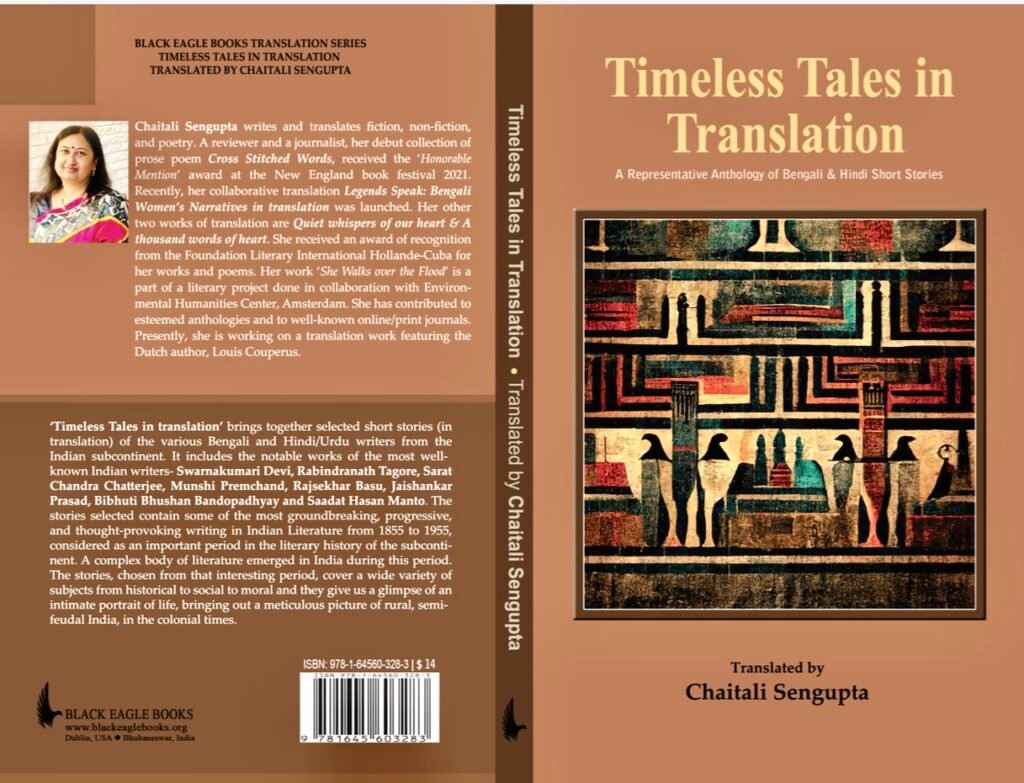By Lopamudra Banerjee
“Translation is not a matter of words only: it is a matter of making intelligible a whole culture.”
– Anthony Burgess
While embarking on a journey of both reading and internalizing classic texts in translation, which attempts to bridge the gap between languages, cultures, continents, I have been always intrigued to know the literary or metaphorical truths that an author intends to depict in his literary work. Can a translator really transcribe those truths while translating the aforesaid work from the source language has been a quest for me as a reader always. Also, while translating Indian literature into English, is it possible to recreate the particulars of the eastern/oriental culture and environment and portray those nuances in English?
As I started flipping through the pages of ‘Timeless Tales of Translation: A Representative Anthology of Bengali and Hindi Short Stories’ penned by prolific poet, author, translator Chaitali Sengupta from Netherlands, these questions kept brimming in my inquisitive mind. All the stories translated in the collection have been penned during the very critical chronological time-frame of the colonial regime (from the mid-nineteenth century till the mid 1950’s) of India. In the foreword to this meticulously presented collection of translated classic tales, quite aptly named ‘Timeless Tales in Translation’, Dr. Sanjukta Dasgupta, author, poet and renowned scholar points out very significantly:
“All the stories selected foreground certain timeless, universal emotions, feelings, sentiments, love…empathy and transcendence…Despite the problems that are embedded within translation practices, it is translation as cultural transfer that sensitizes the world about cultural diversity.”
Read the full review at this link: https://www.setumag.com/2023/04/timeless-tales-in-translation-by.html



